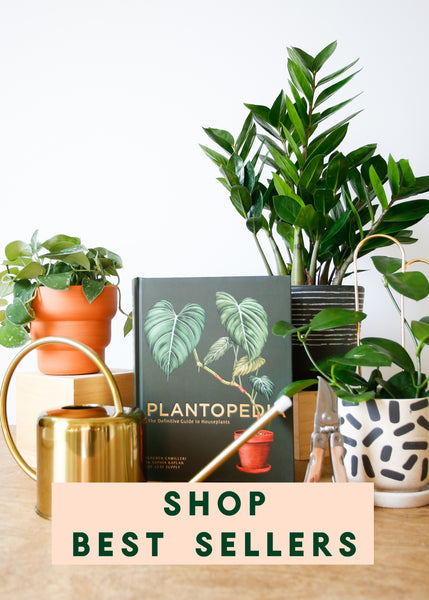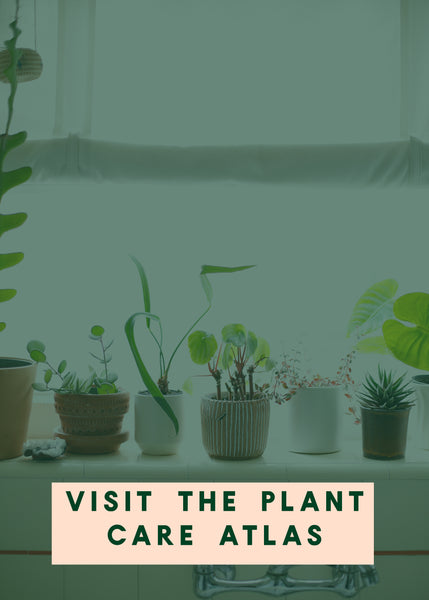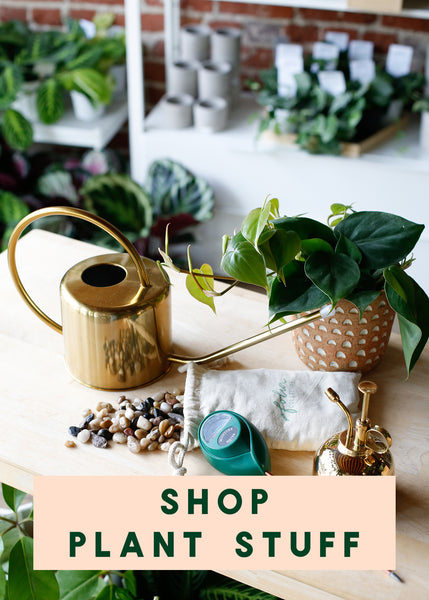Plant Know-How: Drosera capensis (aka Cape Sundew)

Commonly called a 'Cape Sundew', Drosera capensis is a type of carnivorous plant, meaning that it can attract & trap insects, which then breakdown and essentially provide the plant with the fertilizer it needs. Drosera trap their prey with sticky droplets that form on the little hair-like tentacles on their leaves. Once an insect is trapped, the leaves roll up around the insect in order to digest it. There are many species of Drosera, but D. capensis is one of the easiest to grow, and the one most commonly available.
While Drosera need to trap insects in order to grow well, as long as they are kept in conditions where they have access to insects such as flies, gnats, fruit flies, and mosquitoes, they are perfectly able to 'feed' themselves and do not need supplemental insects (or fertilizer).
Like most carnivorous plants, Drosera grow natively in open bog environments, which means those conditions need to be replicated in order for them to thrive in our homes. Read on for our full care guide to learn how to create those conditions for your plant.

HOW TO CARE FOR DROSERA CAPENSIS:
Light requirements for Drosera capensis: Sundews should be in direct sun at least 6 hours a day indoors, so they should be right on a sunny windowsill. Outdoors, keep your plant in full sun to partial shade. If your Drosera is not producing dew droplets on its leaves, it likely needs more sun. Drosera tolerate a range of temperatures (including brief freezes, and up to 100º F), but do best with a slight drop in nighttime temps.
Watering tips for Drosera capensis: Because Drosera grow in wet bogs in the wild, their soil should always be damp. Like many carnivorous plants, the best way to keep Sundews is to set them directly in a tray filled with distilled, reverse osmosis, or rainwater (most carnivorous plants are very sensitive to the minerals in tap water, so these mineral-free waters must be used). This will keep their soil evenly moist. If leaves are drying out or getting crispy quickly, the soil is likely too dry or additional humidity is needed. Leaves that turn black quickly may indicate the mineral content of your water is too high.
The Best Soil for Drosera capensis: Mimic the nutrient-poor conditions of their native bog habitat as much as possible with a mix of peat moss & sand, perlite, or pumice. California Carnivores, a grower here in California, recommends 4 parts peat moss to 1 part perlite for Drosera capensis.
Is Drosera capensis pet-safe? Sundews are non-toxic to cats & dogs, but as always, monitor your pets if they've ingested plants- just in case. If you're looking for more pet-safe plants, be sure to check out the Pet Safe category of the Plant Care Compendium!
How to style Drosera capensis: Because Drosera should be kept in a little standing water at all times, we love them grouped with other carnivorous plants with similar needs in a cute tray like our Nixie Plant Stand/Tray!
Did you know? Some Drosera require a dormancy period for part of the year, but Drosera capensis does not need that dormancy and will grow year round. In good growing conditions, Drosera produce light purple blooms for a few weeks, typically in the summer months.
Looking to dive into the world of Sundews? We often have Drosera capensis in stock at our Eagle Rock shop, but we don't ship them.





